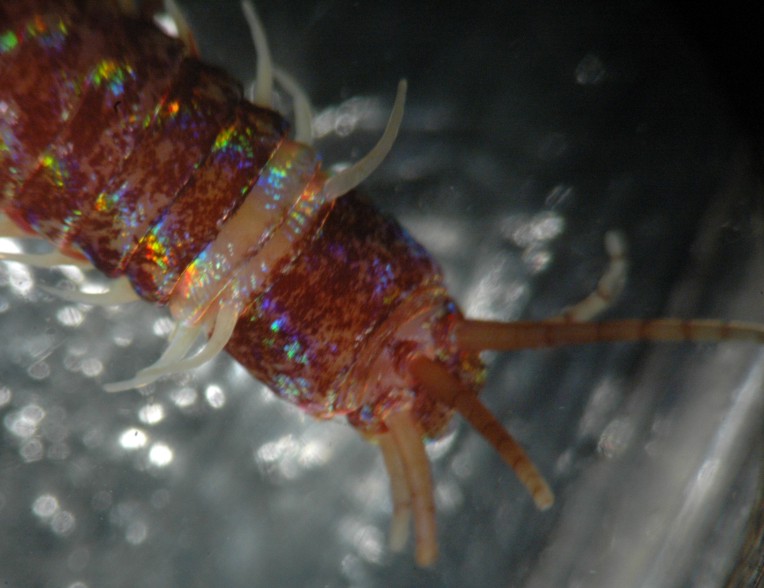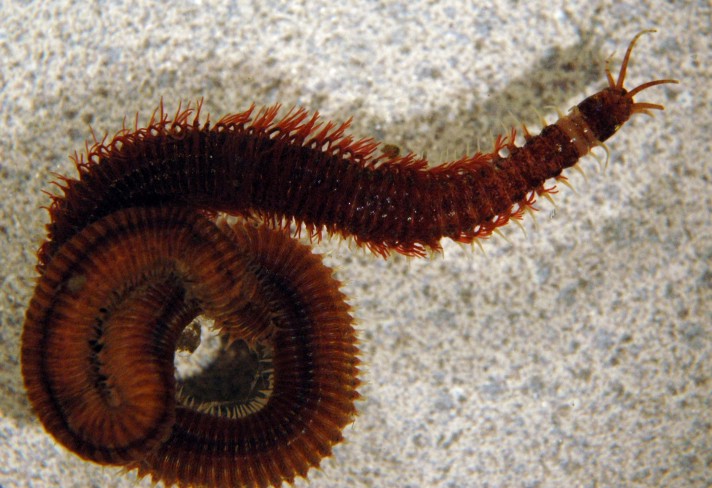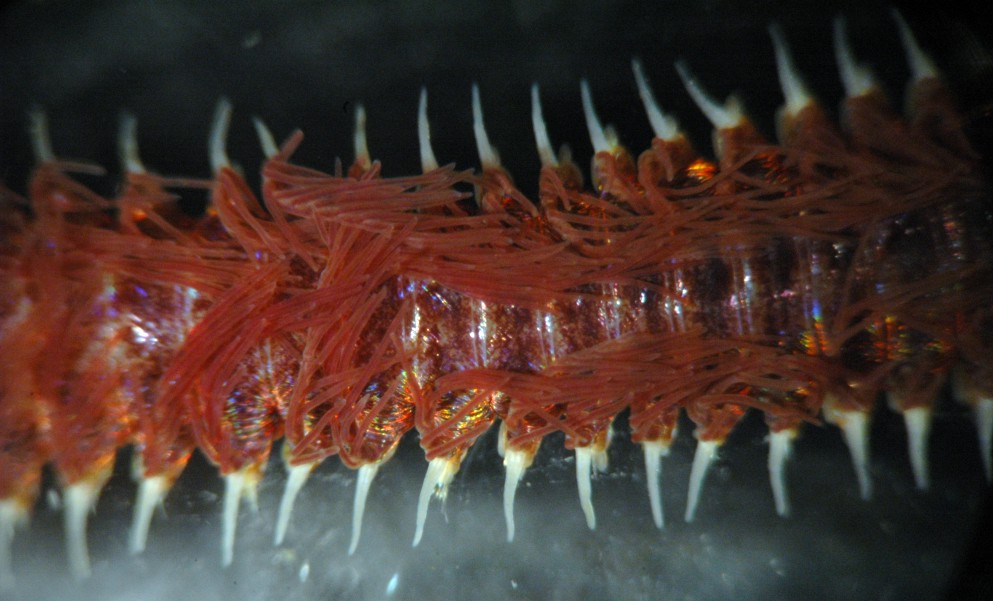How to Distinguish from Similar Species:Eunice aphroditois has gills first appearing on setiger 5-7 and the hooks ventral to the aciculae are black. The prostomial antennae have well-indented annular rings. The Kobe bobbit worm, Eunice kobiensis, is very similar to E. valens but it is not known if E. kobiensis occurs in our area.
Geographical Range: Alaska to central California
Depth Range: Low intertidal to 15 m
Habitat: Intertidal, usually in tubes under rocks.
Biology/Natural History: Although this is an "errant" (motile) polychaete, it builds a parchmentlike tube which has adhering pebbles, usually under boulders. This species is omnivorous, and ventures outside its tube to eat algae as well as other animals.
Reproduction in the Washington area takes place during spring and summer. During reproduction, the rear portion of the body of a number of species of Eunice breaks off as an independent, gamete-bearing individual called an epitoke which swims through the water releasing the gametes, while the anterior portion of the worm remains on the bottom. However, in this species the adults do not become anatomically specialized during reproduction. Females release yellow eggs about 1/3 mm in diameter.
Eunicids are the only polychaetes eaten regularly by humans
(the Palolo
worm Eunice
viridis in Samoa
and Fiji). The palolo worm has an epitoke
which swarms during the last quarter of the moon and the lowest tides
during
October and November. Islanders gather the swarming epitokes
for
food.
This family builds only fragile parchment tubes if any.
| Return to: | |||
| Main Page | Alphabetic Index | Systematic Index | Glossary |
References:
Dichotomous Keys:Carlton, 2007
Kozloff, 1987, 1996
General References:
Lamb
and Hanby, 2005
O'Clair
and O'Clair, 1998
Scientific Articles:
Web sites:
General Notes and
Observations: Locations,
abundances, unusual behaviors:

This view of the head shows the 5 prostomial
antennae with annular markings, plus the two peristomial
cirri.

This view shows that the gills start close behind the head, on setiger
3.

This dorsal view of the midregion of the body shows the gills and parapodia.
Authors and Editors of Page:
Dave Cowles (2009): Created original page
CSS coding for page developed by Jonathan Cowles (2007)
